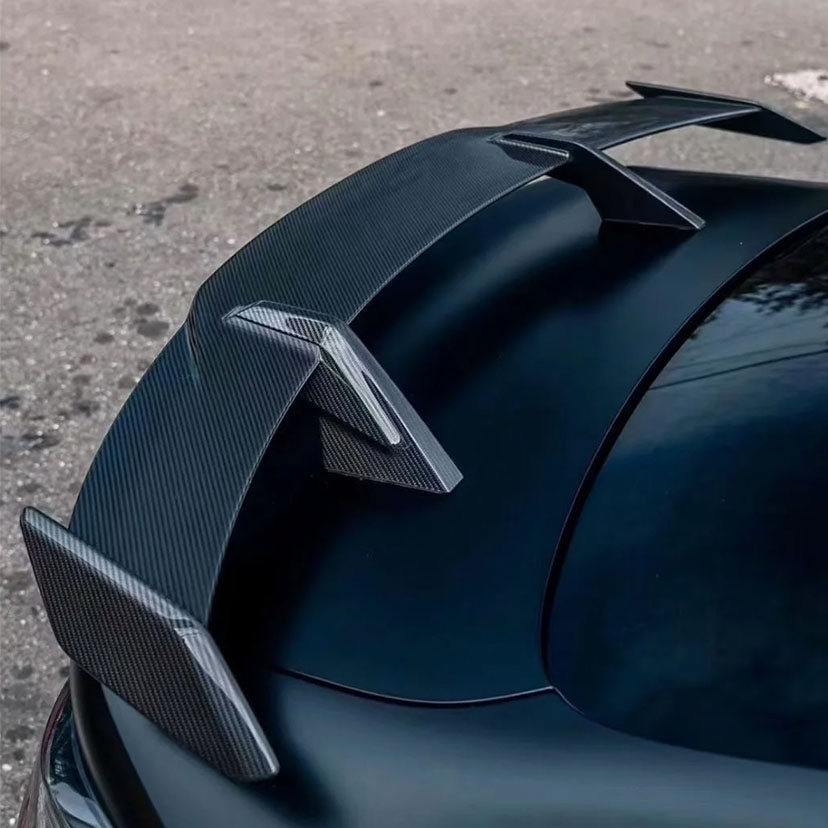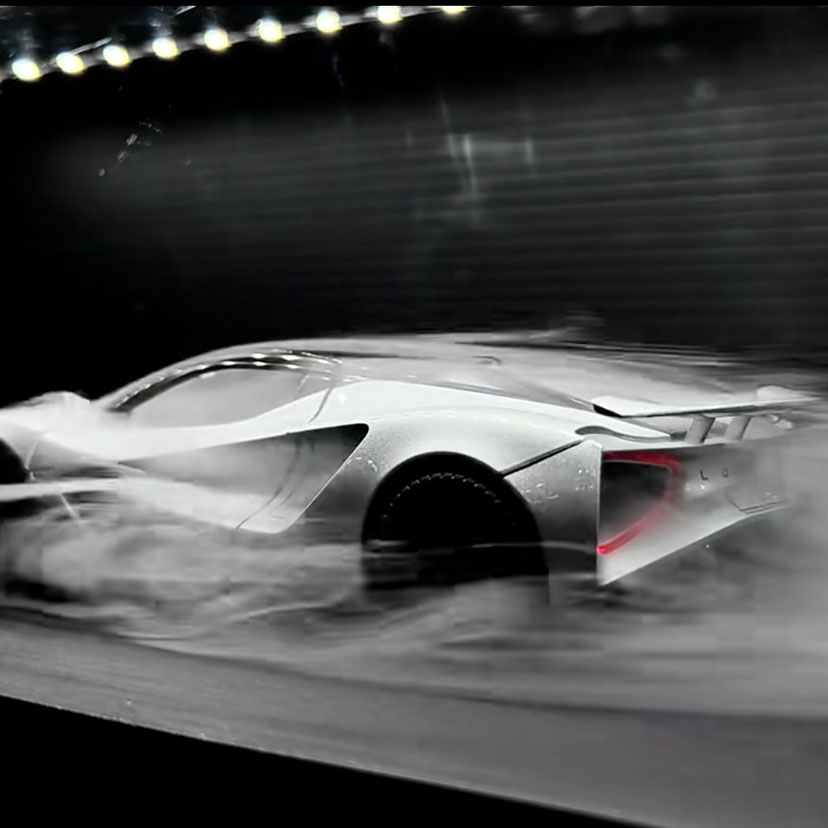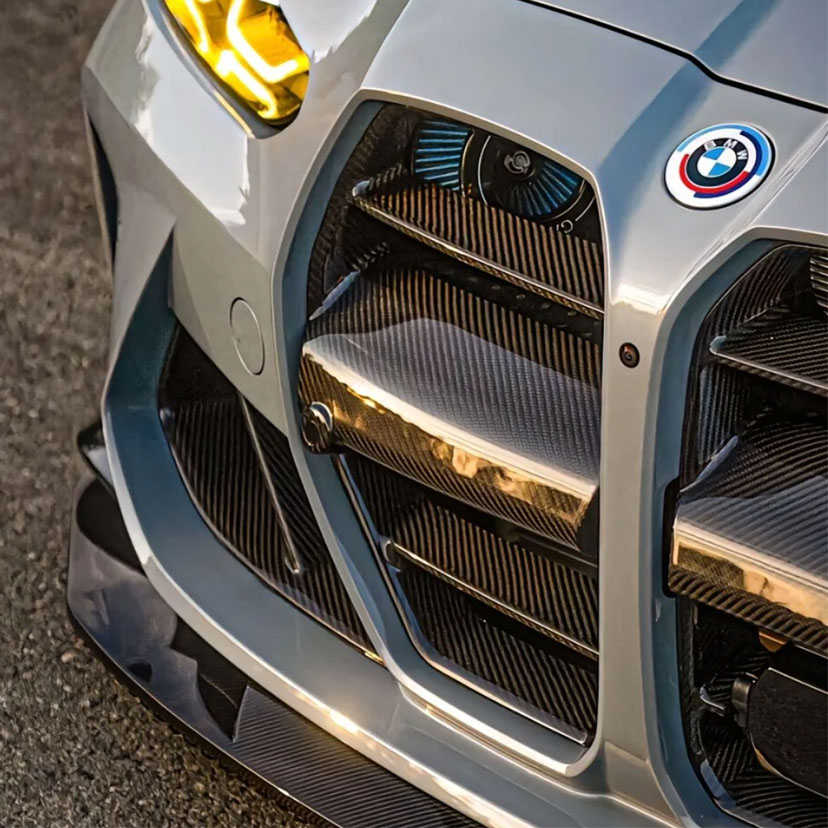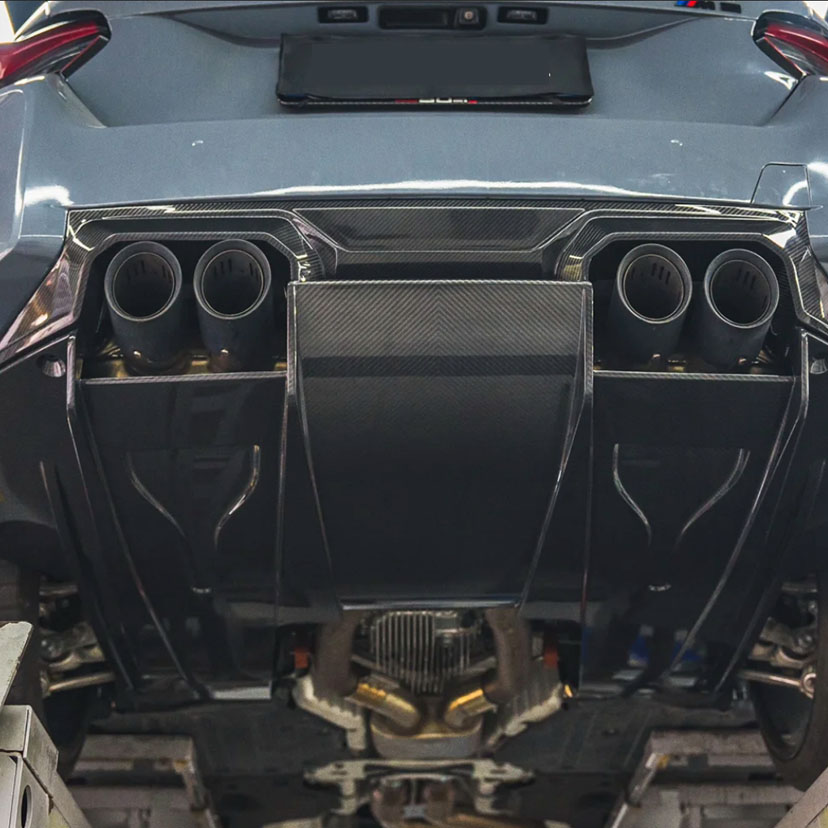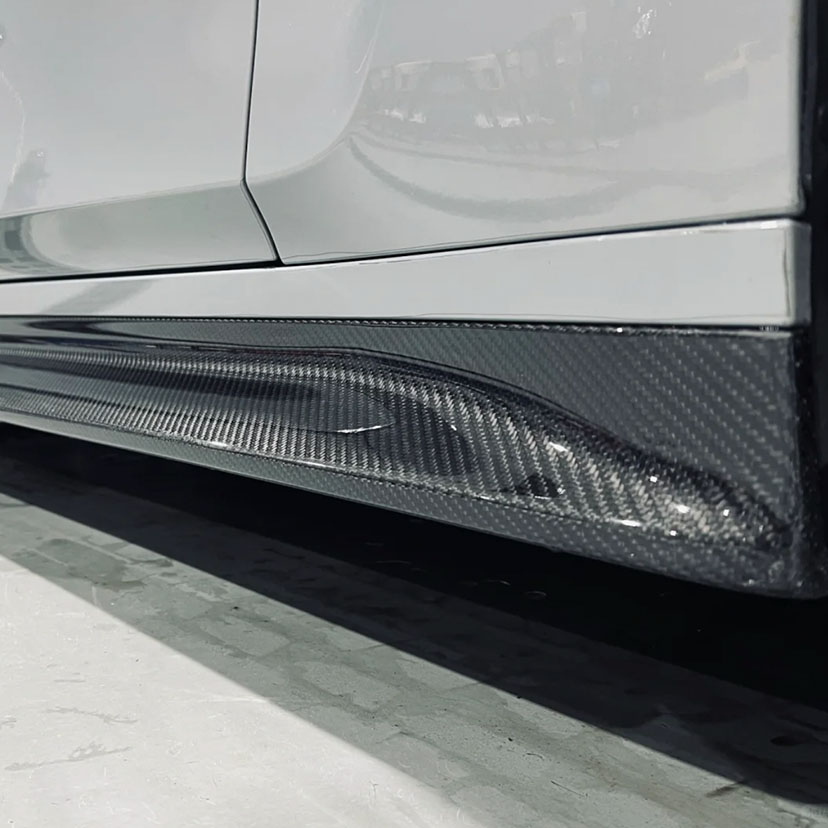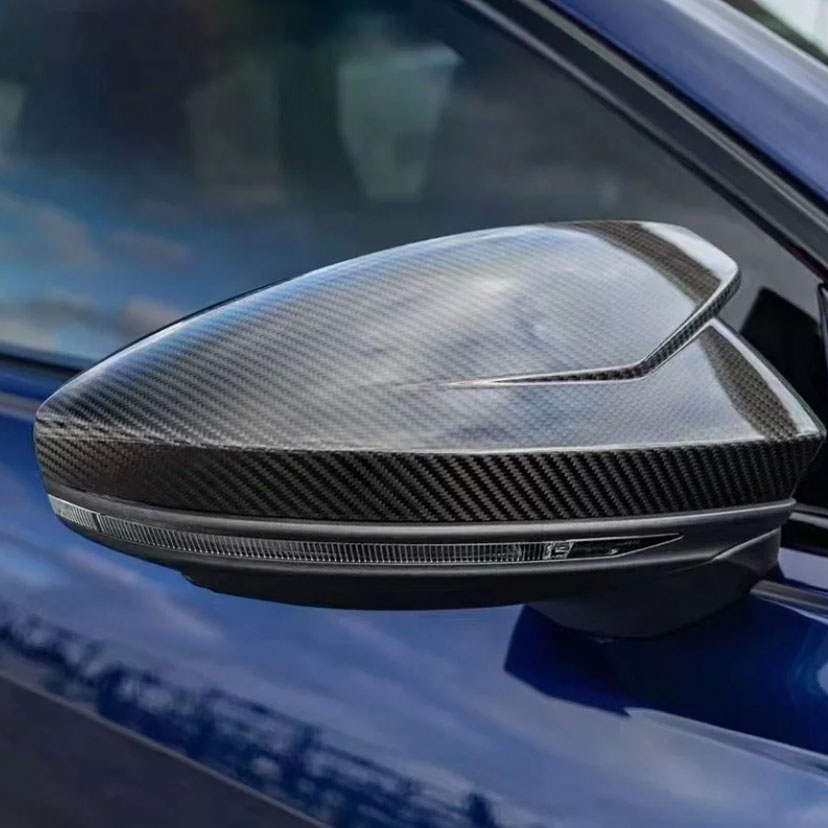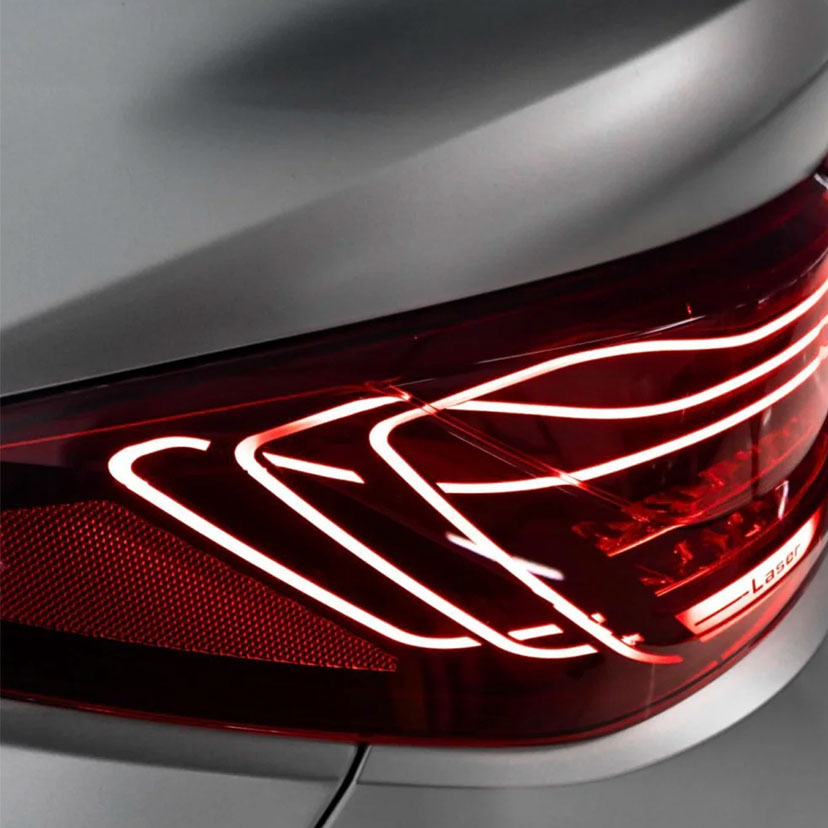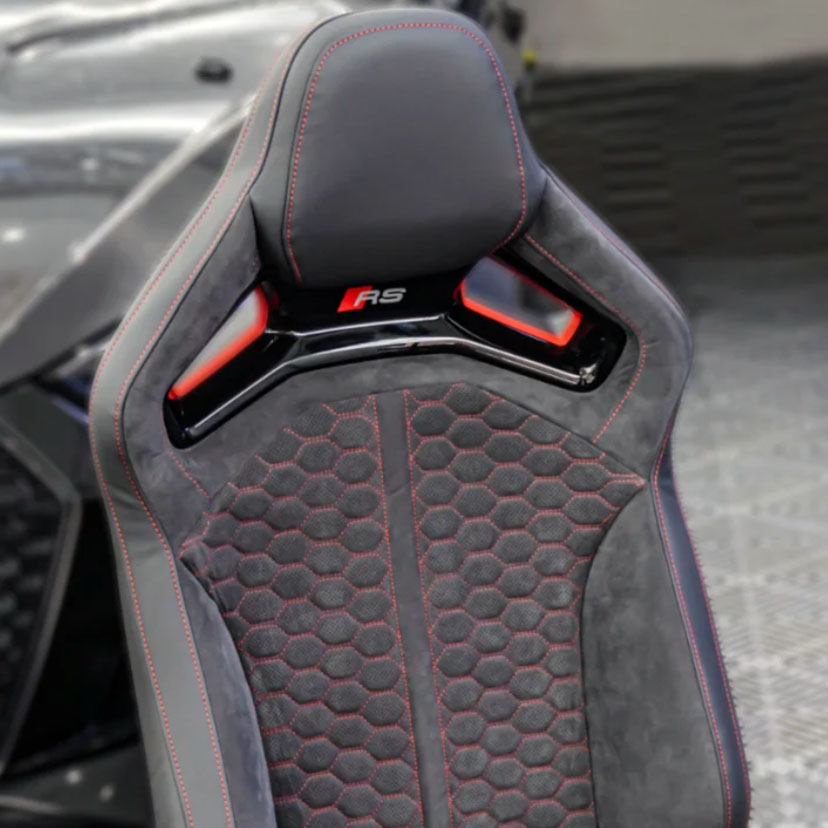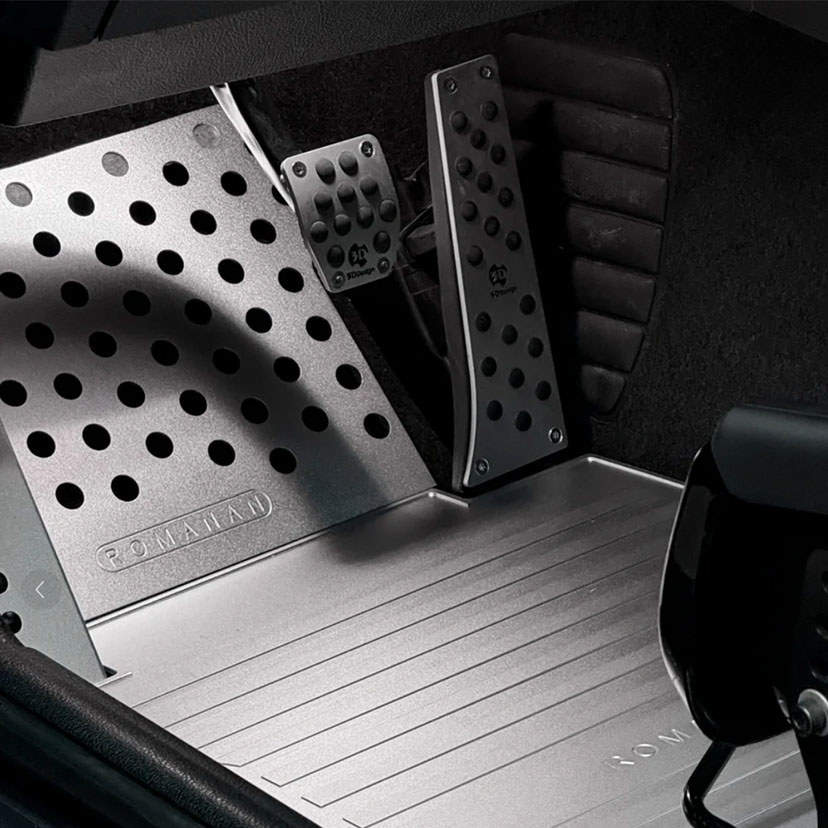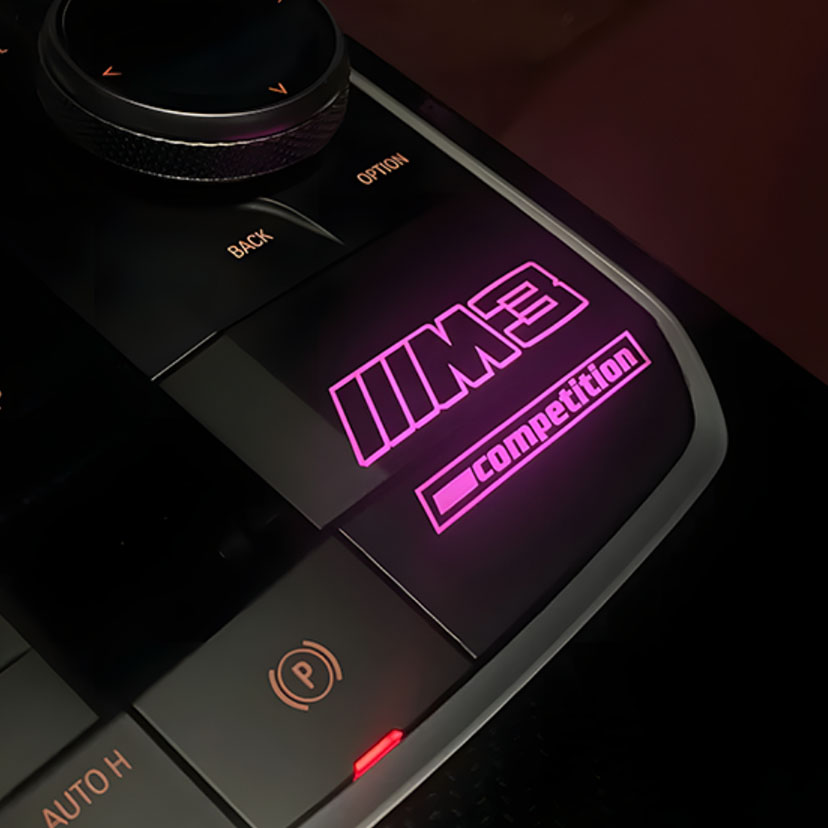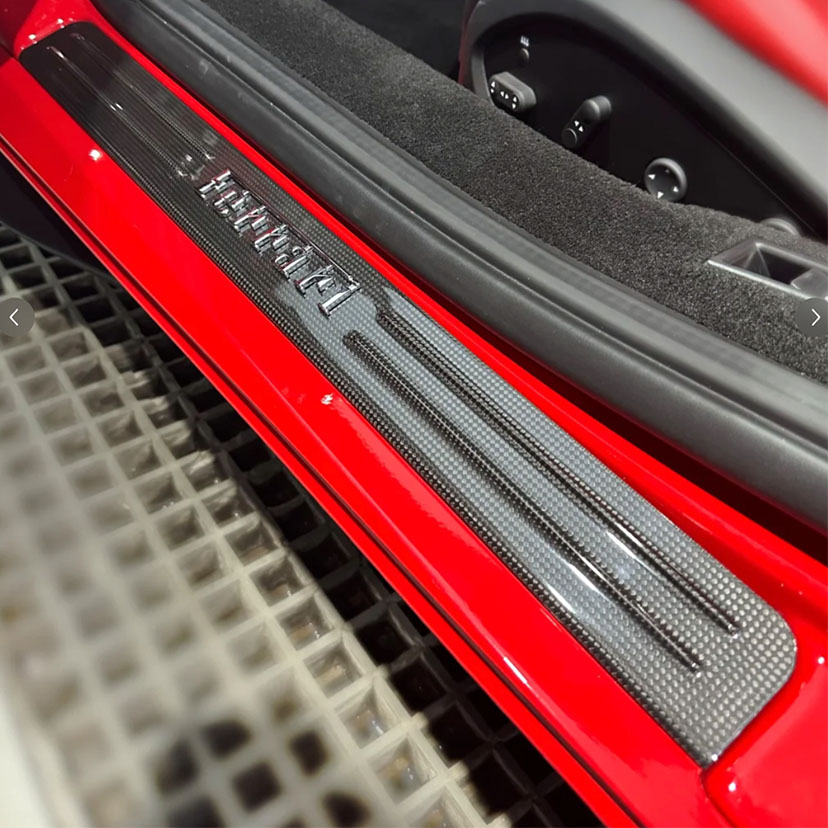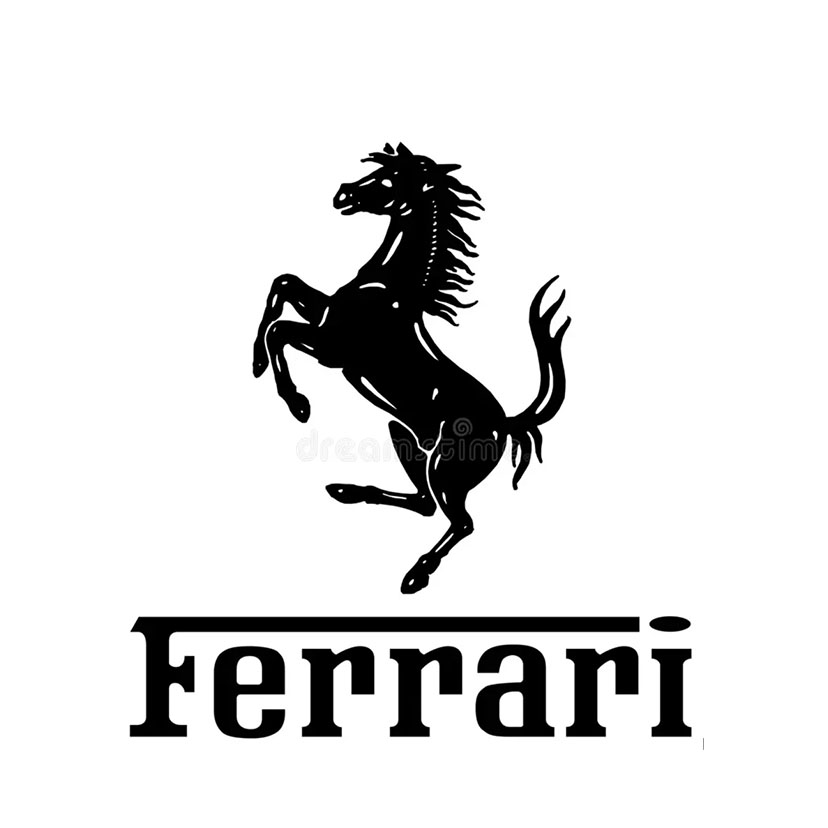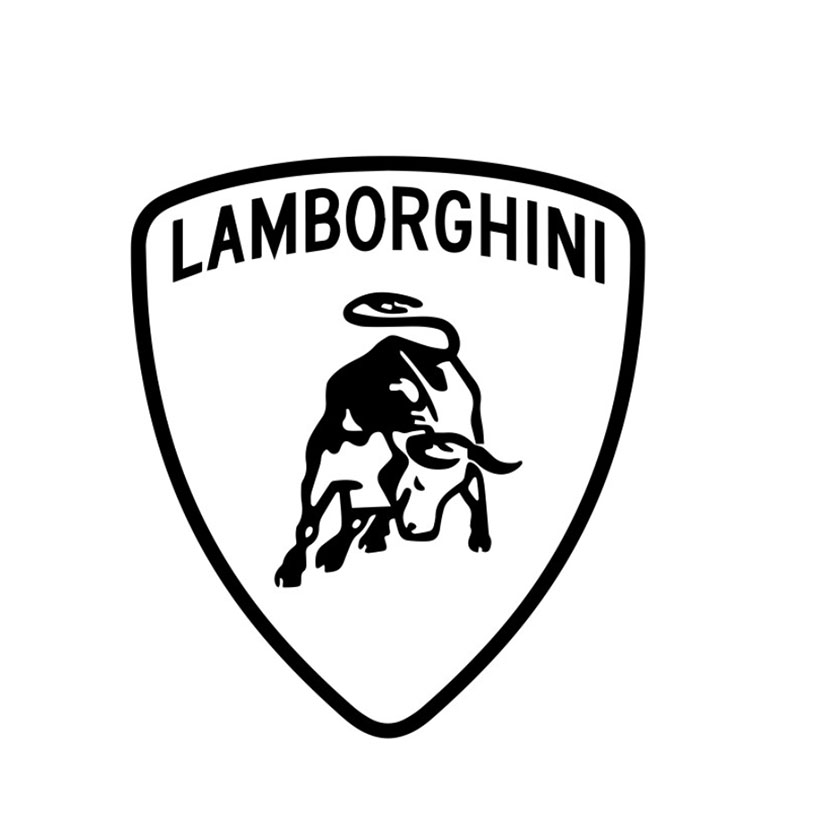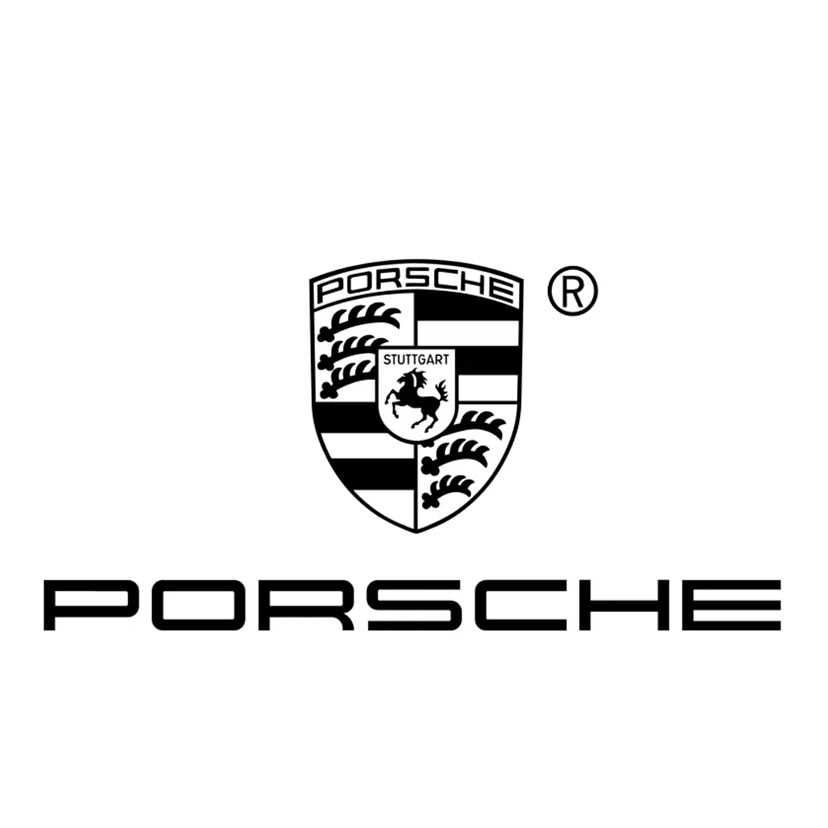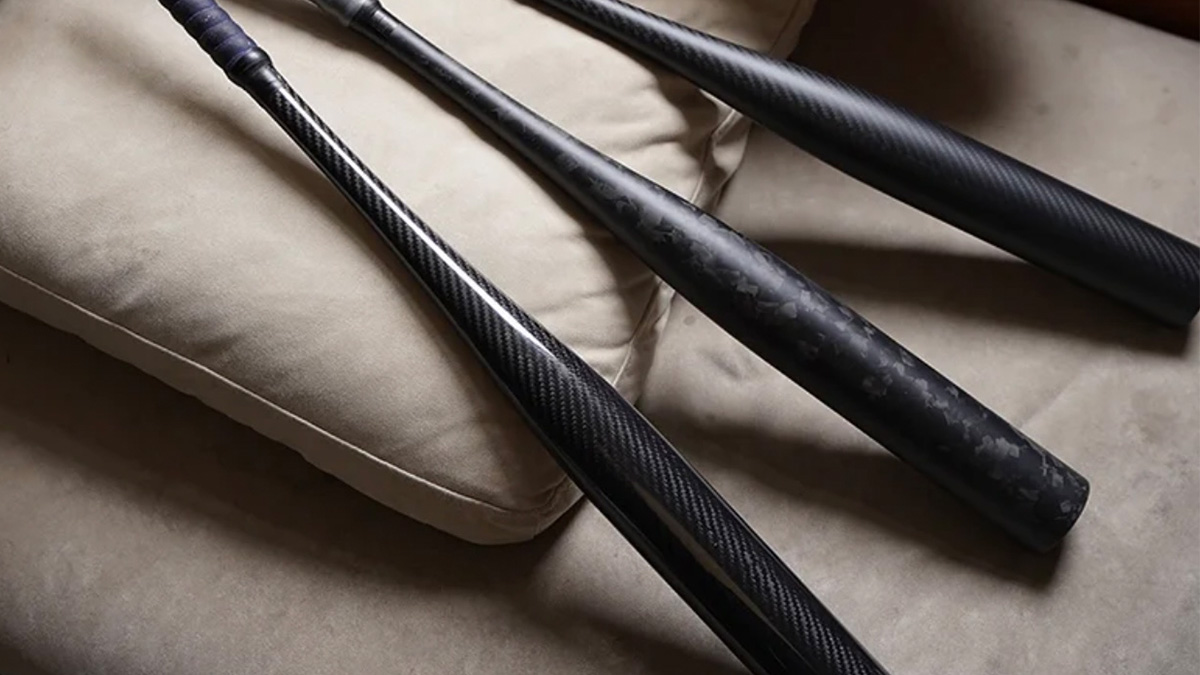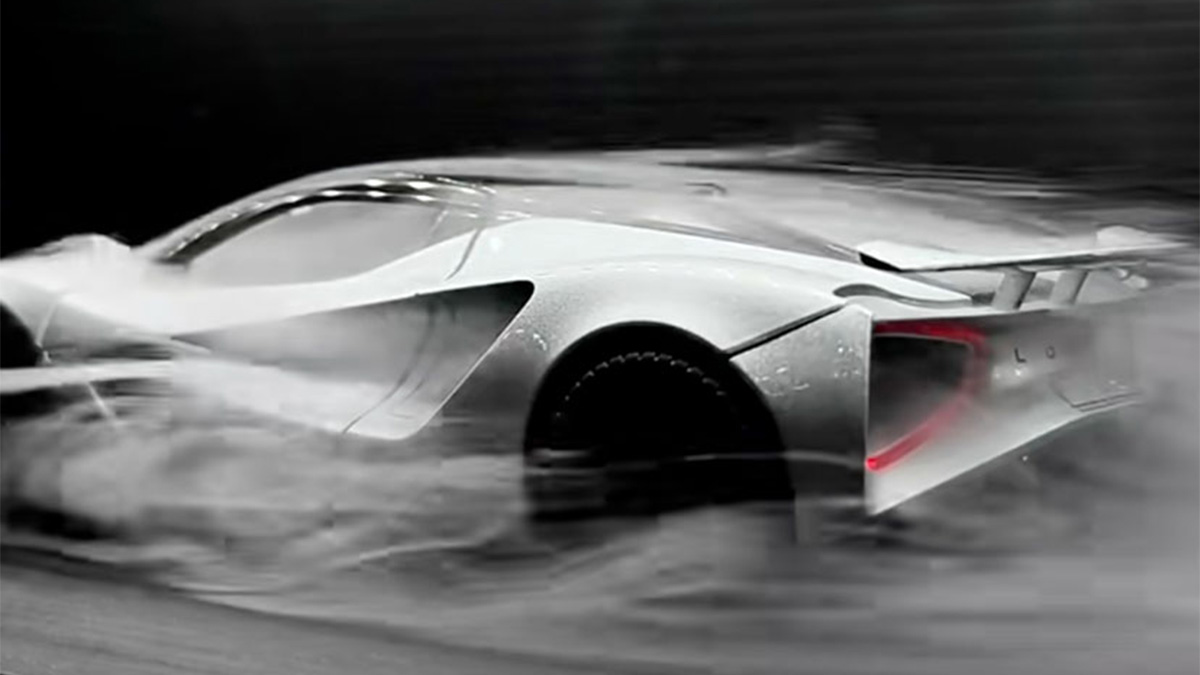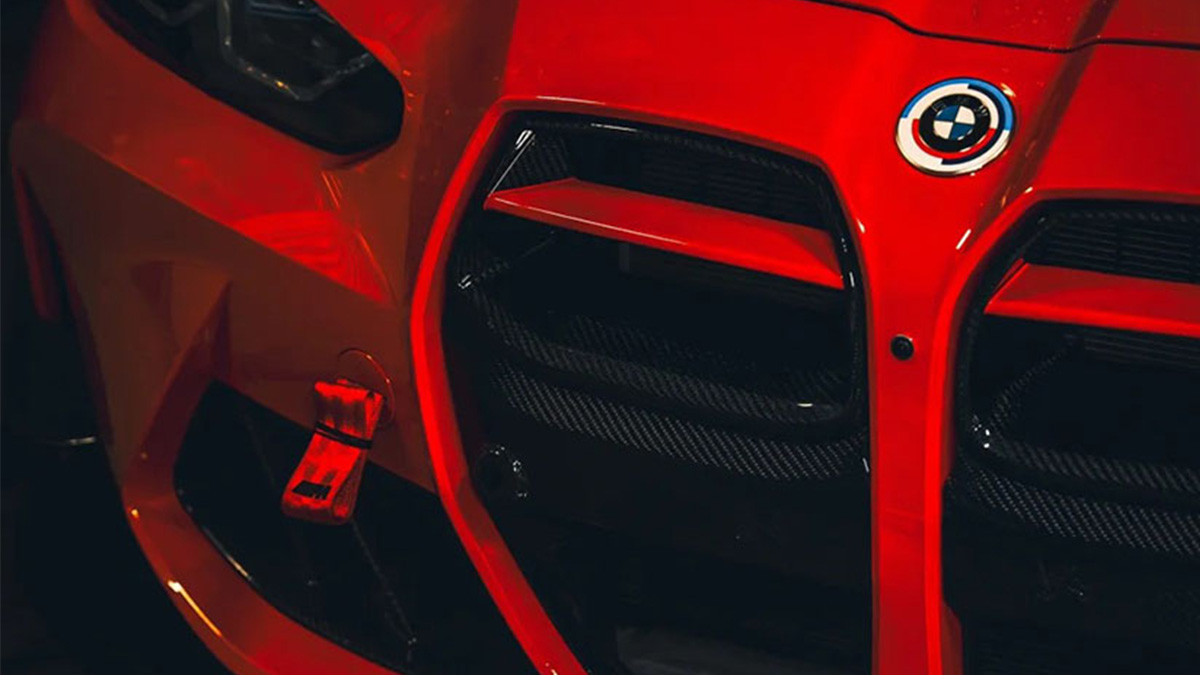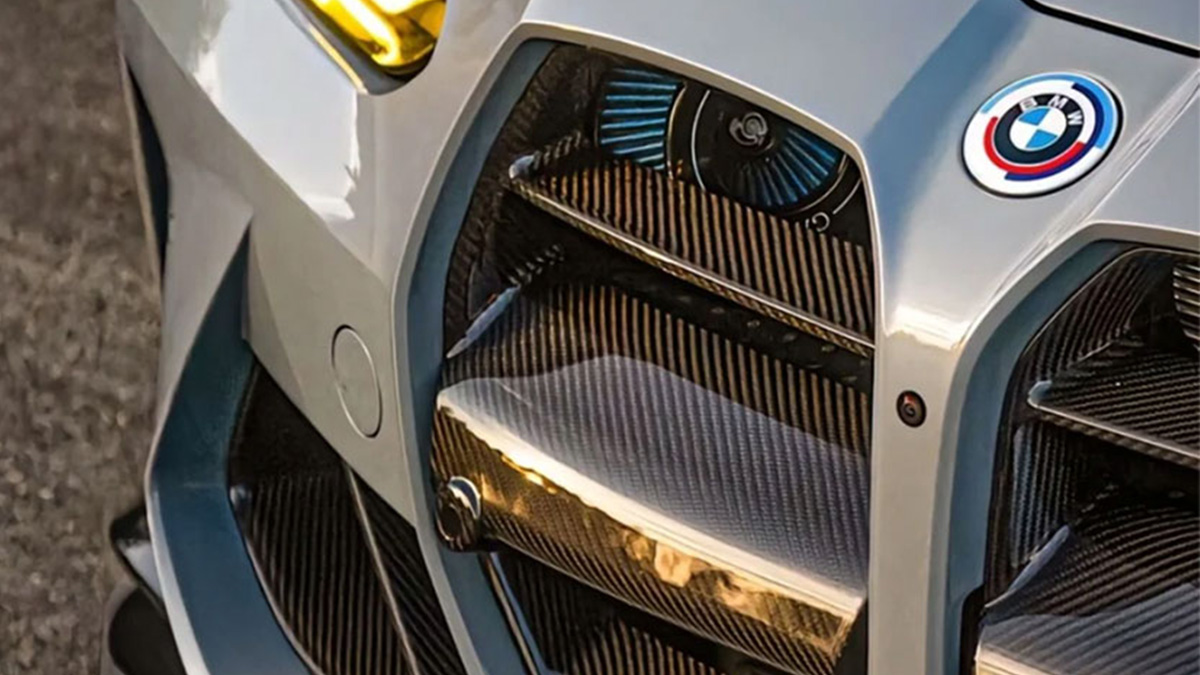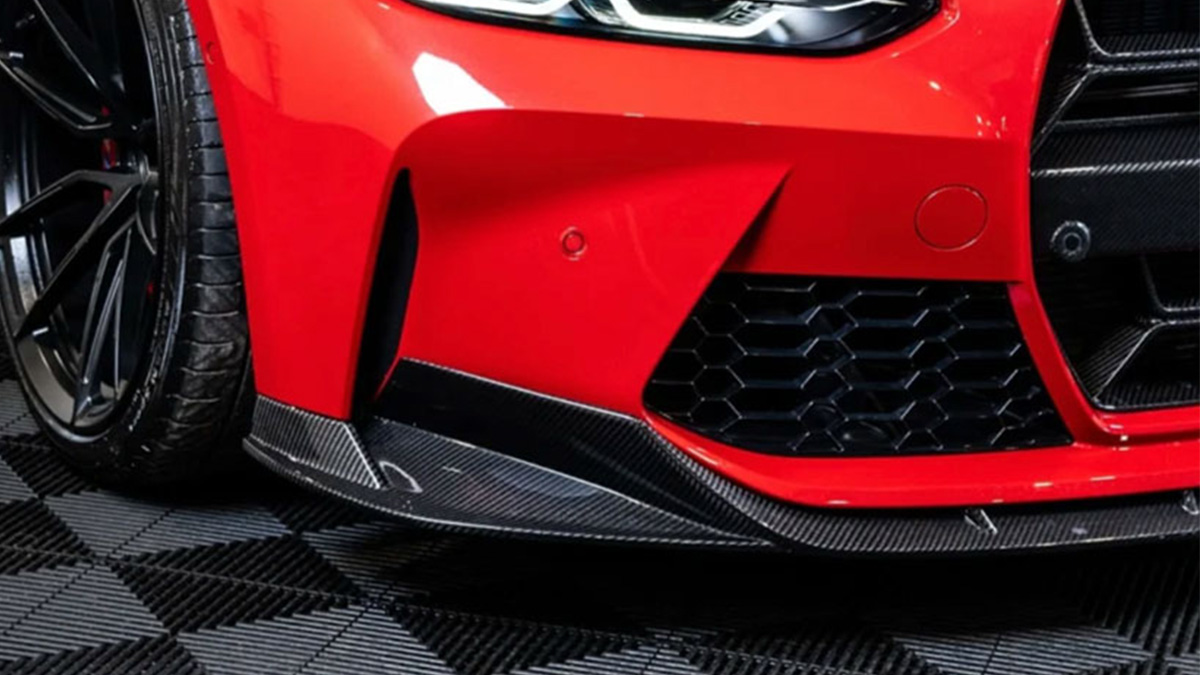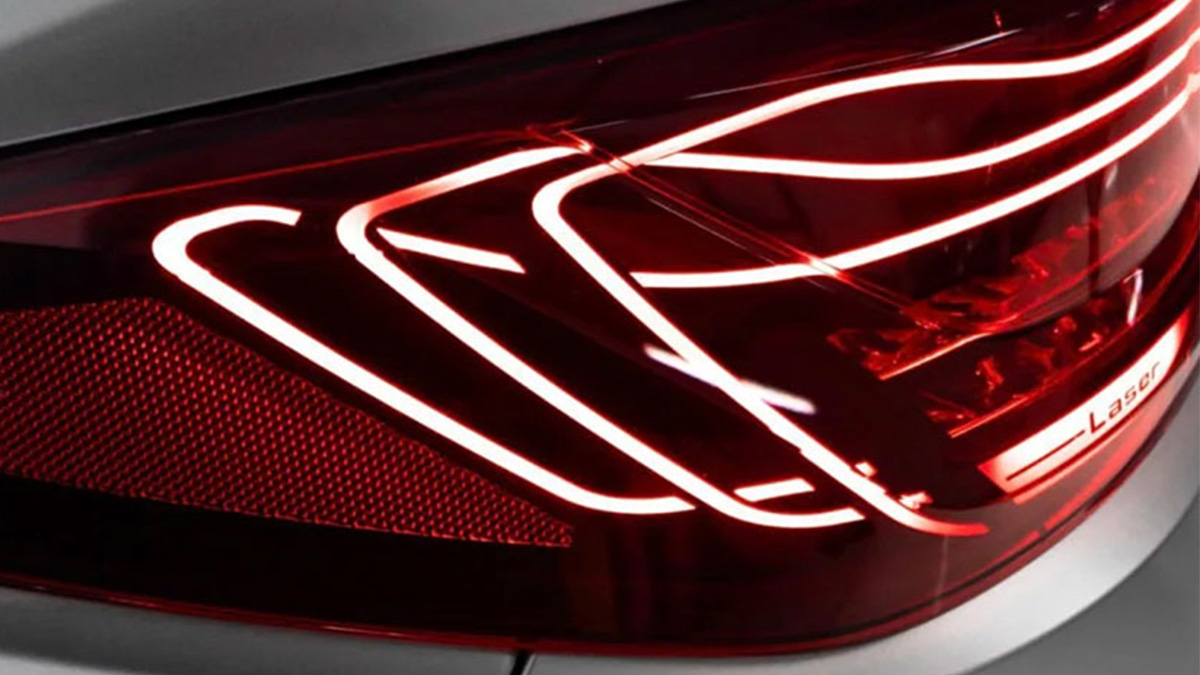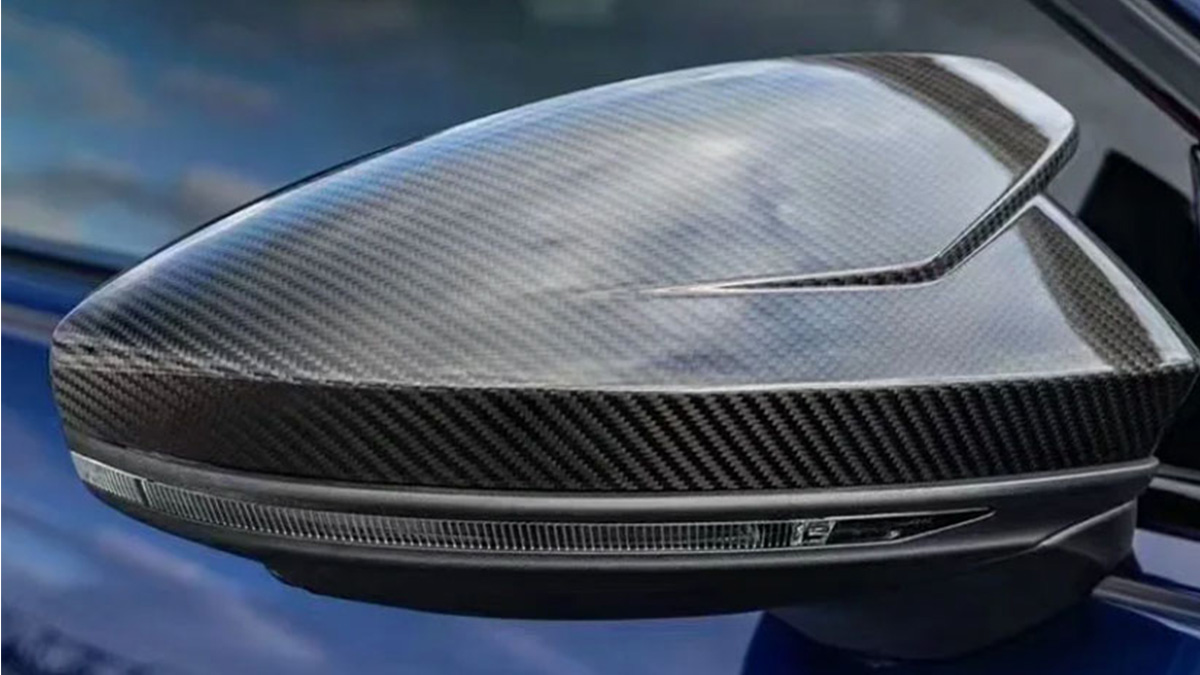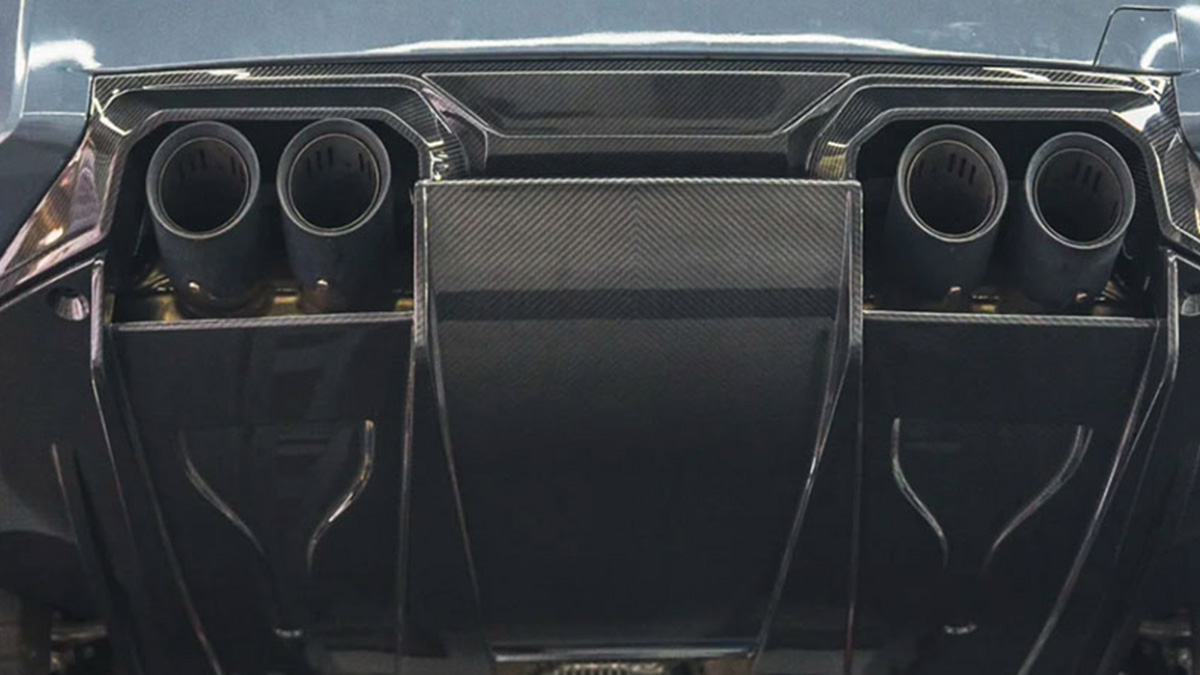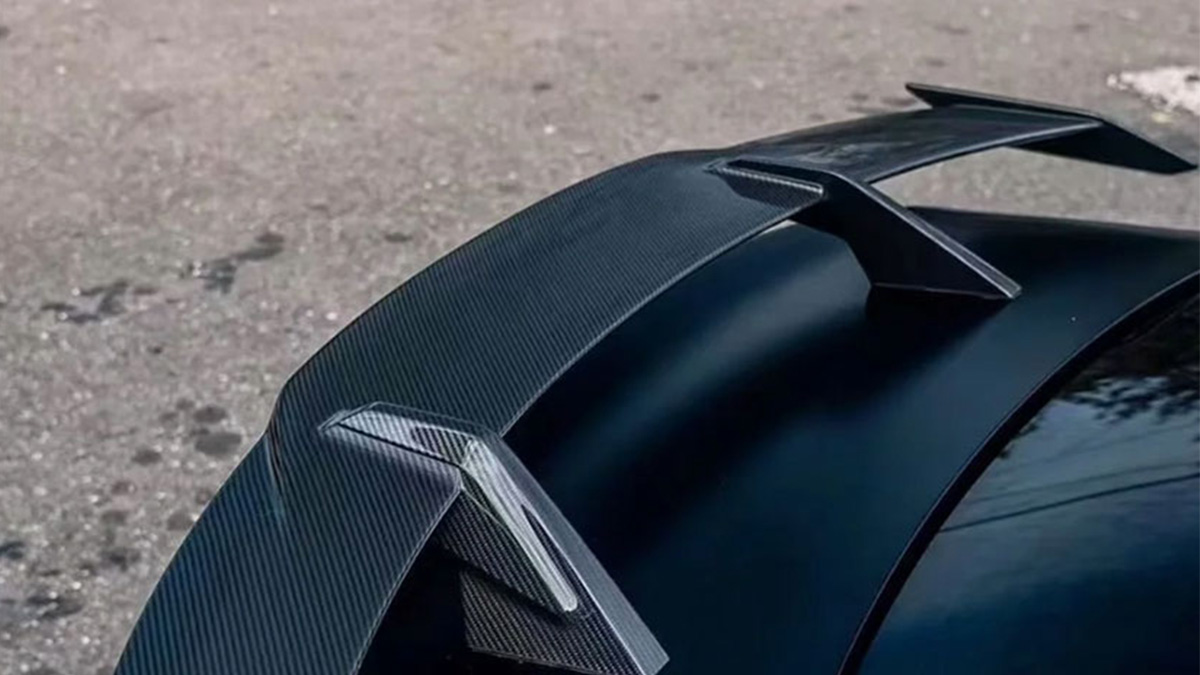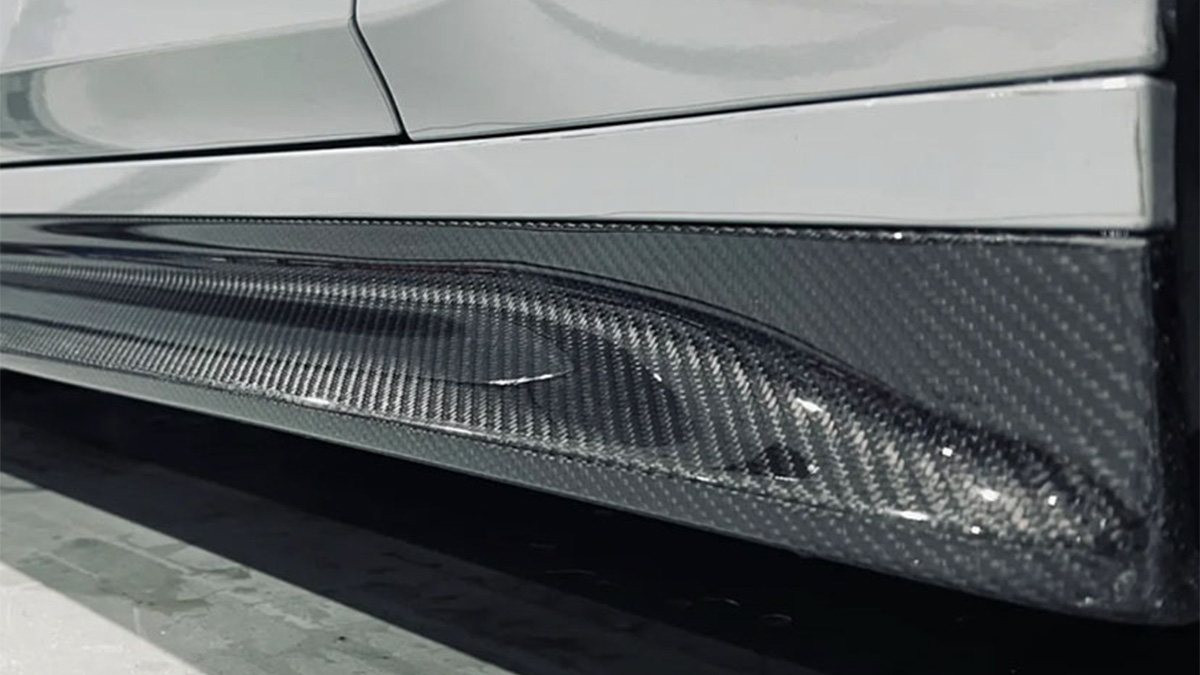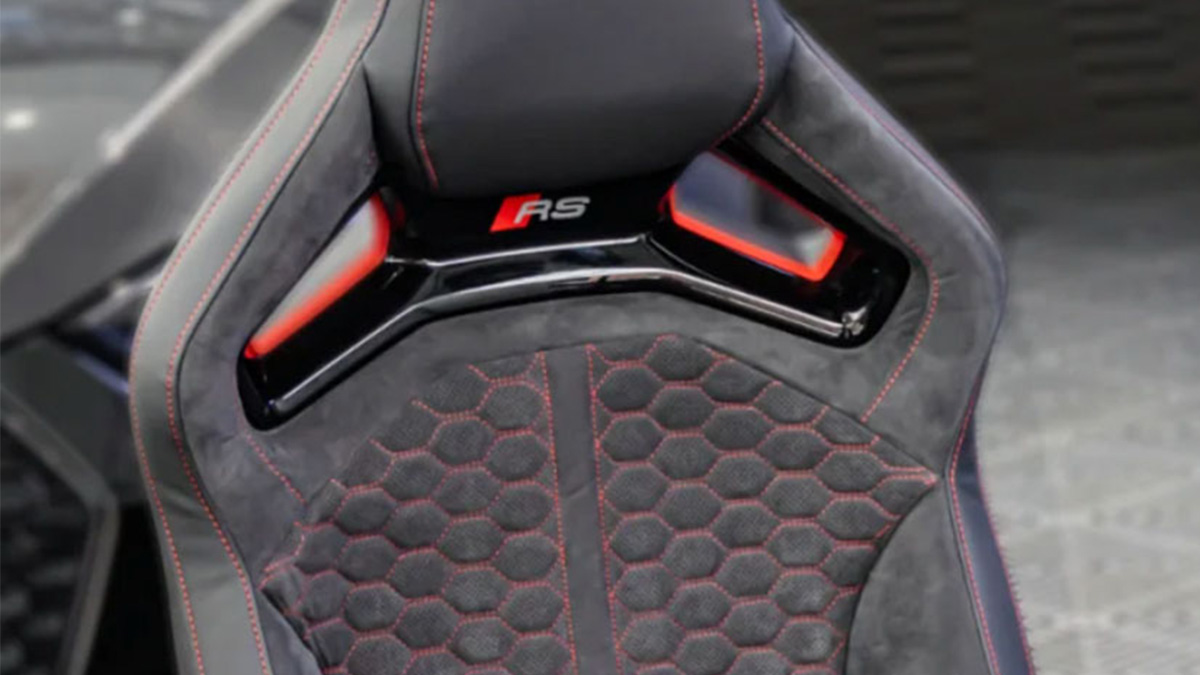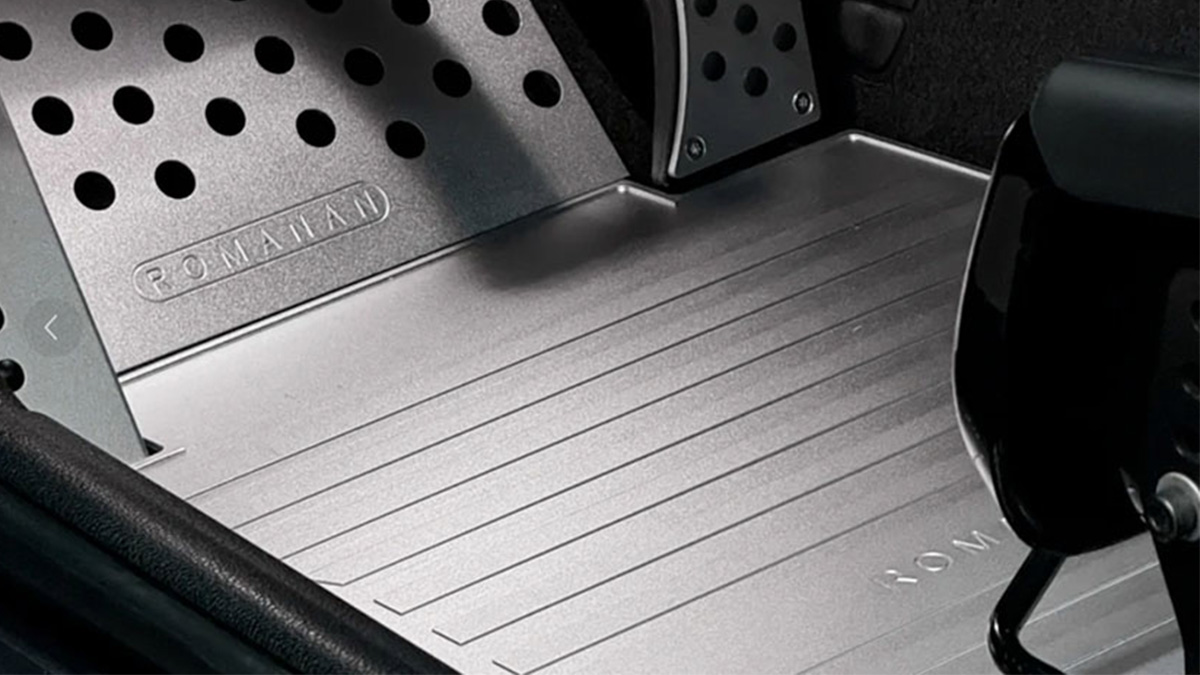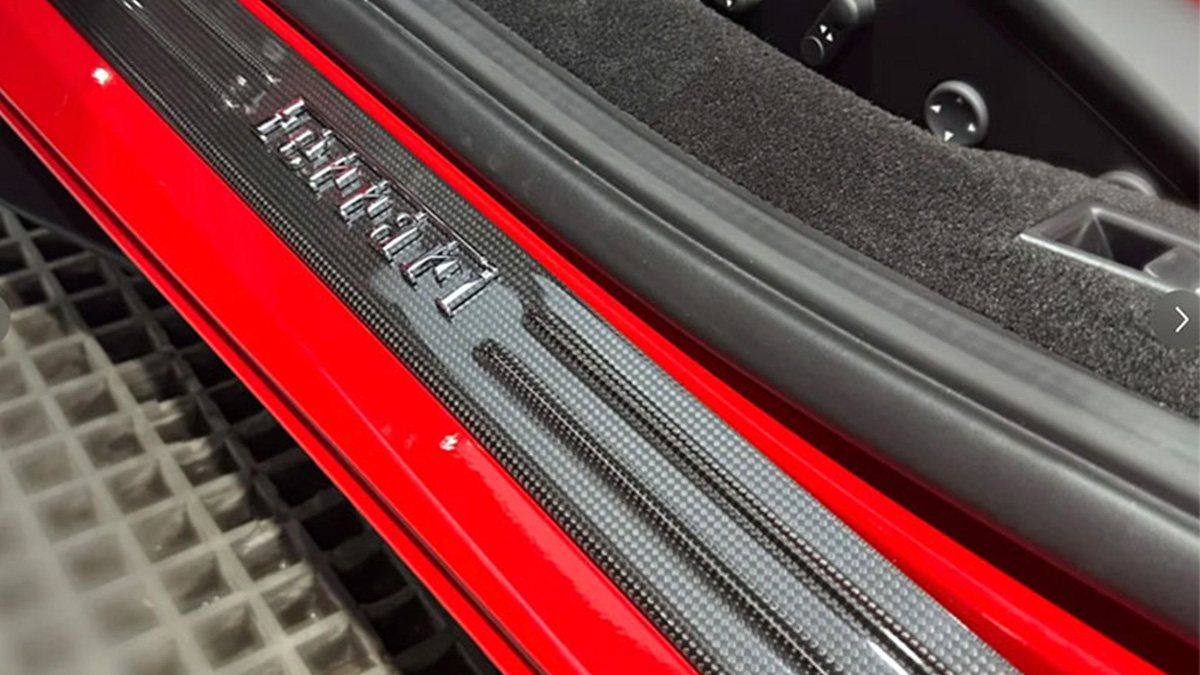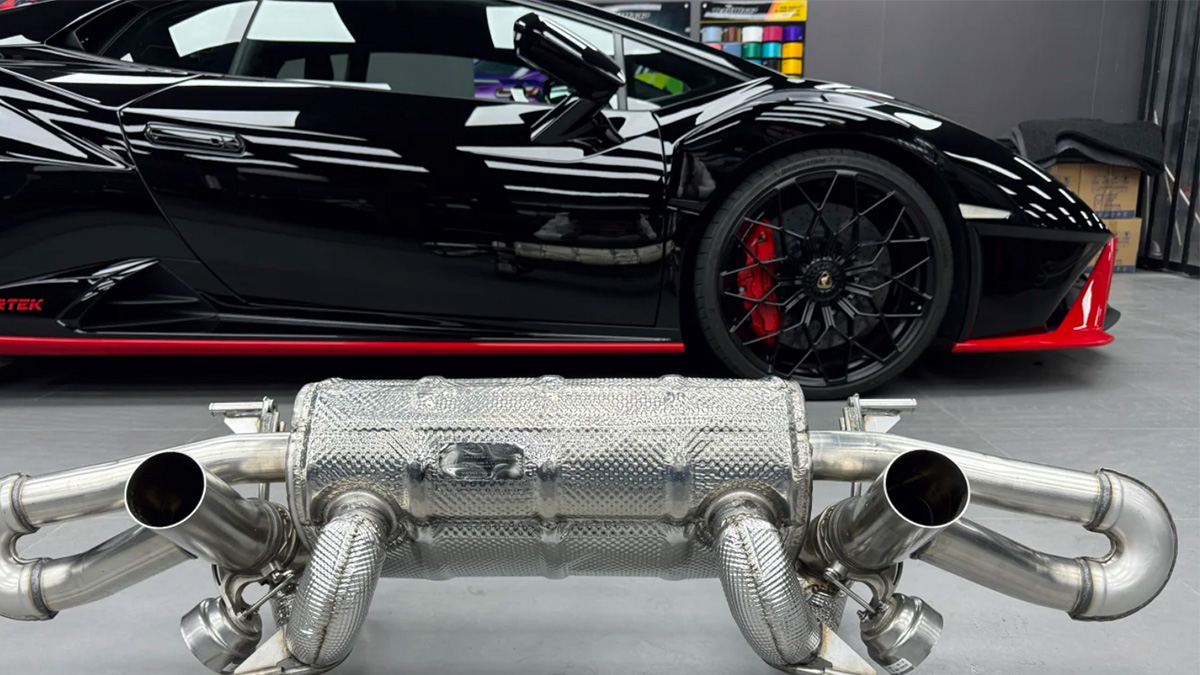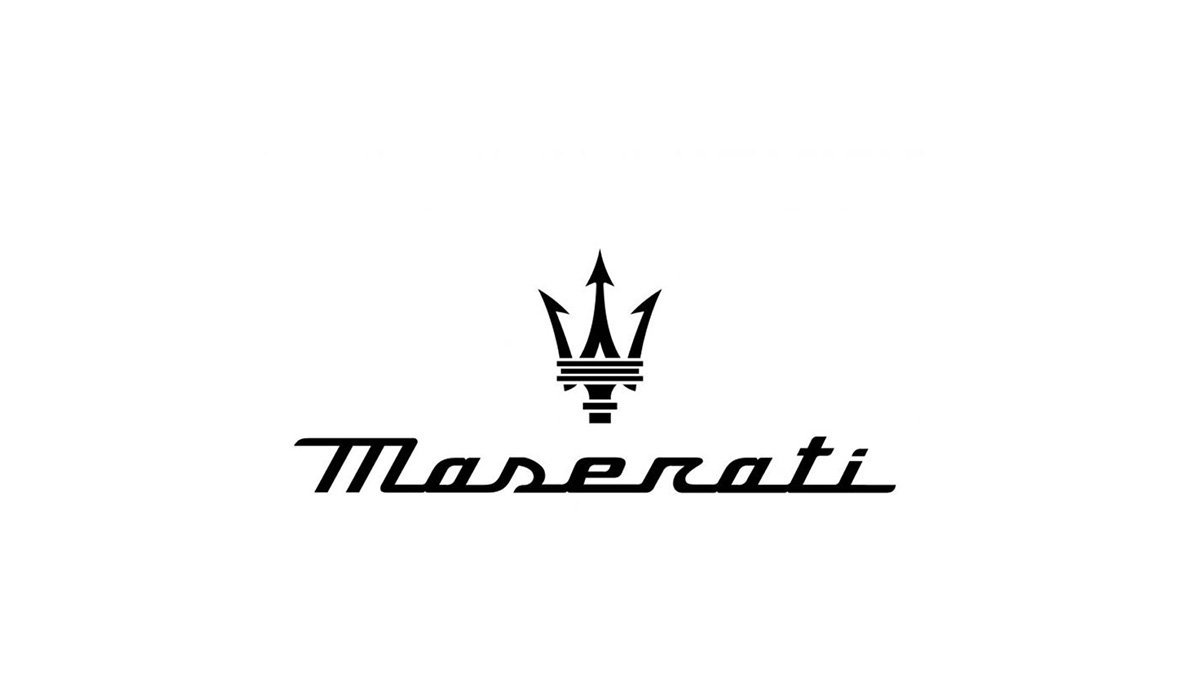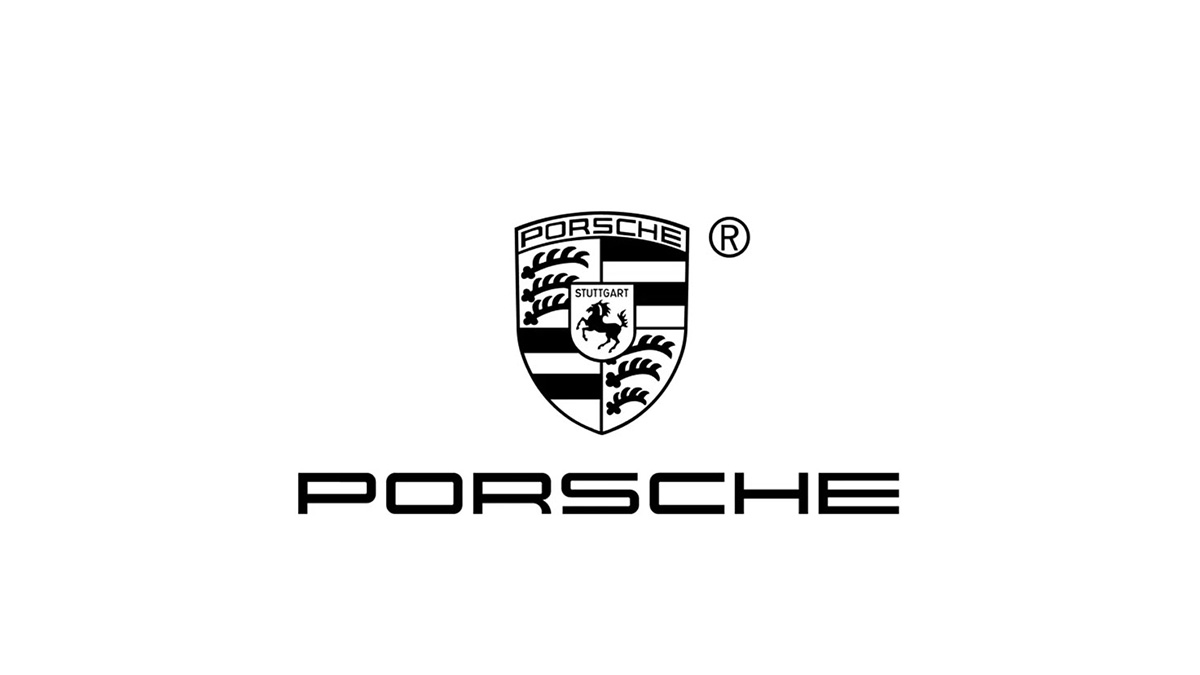Die Leistung des Porsche 996 GT3 RS erforschen

The Porsche 996 GT3 RS stands as a testament to Porsche’s engineering prowess, offering you a thrilling blend of raw driving dynamics and motorsport heritage. This model showcases several key engineering achievements:
A polycarbonate rear window and carbon fiber components reduce weight.
Optional Porsche Ceramic Composite Brakes enhance performance.
Adjustable suspension components improve dynamic camber control.
With only 682 units produced, the rarity of the Porsche 996 GT3 RS adds to its allure. Enthusiasts like you appreciate its analog driving experience, making it a coveted gem in the automotive world.
Wichtigste Erkenntnisse
The Porsche 996 GT3 RS is very light. It uses carbon fiber parts to improve speed and handling on the track.
Its Mezger engine gives 381 horsepower and quick acceleration. This makes it exciting for people who love driving.
The car has special aerodynamics like a fixed rear wing and front splitter. These help keep it steady and easy to control at high speeds.
Only 682 of these cars were made, making it rare. This makes it more wanted by collectors and car fans.
The 996 GT3 RS is a mix of road and race cars. It gives a simple driving experience focused on control and connection.
Design und Eigenschaften
Leichte Konstruktion
The Porsche 996 GT3 RS prioritizes weight reduction to enhance performance. You’ll notice the extensive use of carbon fiber in key areas, such as the front lid, engine cover, and rear spoiler. These components significantly reduce the car’s overall weight. A polycarbonate rear window and a decal front badge replace heavier materials, further contributing to its lightweight design.
Compared to the standard Porsche 911 GT3, the 996 GT3 RS sheds approximately 50 kilograms (110 pounds). This reduction improves agility and responsiveness, making it a standout in the Porsche 911 lineup. Every detail, from the lightweight bodywork to the specialized materials, reflects Porsche’s commitment to delivering a track-focused machine.
Gestaltungselement | Beschreibung |
|---|---|
Bodywork | Specialized bodywork with unique features for cooling and aerodynamics. |
Leichte Konstruktion | Use of carbon fiber for front lid, engine cover, and rear spoiler. |
Gewichtsreduzierung | Plastic rear window and decal front badge to save weight. |
Farboptionen | Only available in Carrera White with red or blue accents. |
Aerodynamische Verbesserungen
The aerodynamic design of the Porsche 996 GT3 RS ensures optimal performance at high speeds. The fixed rear wing, developed in a wind tunnel, minimizes rear-end lift while maintaining a low drag coefficient of 0.30. You can even adjust the wing’s angle to suit different driving conditions.
At the front, the splitter directs airflow under the car, reducing lift and improving stability. Large underbody panels and a lower ride height enhance aerodynamic efficiency. These features work together to keep the car planted on the road or track, giving you confidence during spirited driving.
The front splitter reduces lift by directing airflow under the car.
The rear wing minimizes lift and offers adjustable settings for performance optimization.
A lower ride height and underbody panels improve aerodynamic efficiency.
Innenarchitektur
Inside the Porsche 996 GT3 RS, every element focuses on performance. Lightweight sport seats made from carbon with Alcantara trim provide excellent support, ensuring you stay comfortable and in control during aggressive driving. The minimalist interior eliminates distractions, allowing you to concentrate fully on the road ahead.
Race-inspired features, such as a full roll cage and driver-focused displays, emphasize the car’s motorsport heritage. The interior also incorporates advanced track technology, like the Porsche Track Precision app, to help you monitor performance metrics. This design ensures that every drive feels like a lap on the racetrack.
Lightweight carbon sport seats with Alcantara trim enhance comfort and control.
A full roll cage adds safety and reinforces the car’s racing DNA.
Minimal distractions and driver-focused displays create a pure driving environment.
Motor und Leistung
The Mezger Engine
Overview of the 3.6-liter flat-six engine’s design and reliability
The heart of the Porsche 996 GT3 RS is its legendary Mezger engine, a masterpiece derived from Porsche’s motorsport history. This 3.6-liter flat-six engine traces its roots to the racing engines used in the Porsche 962 and 911 GT1. Its design prioritizes durability and performance, making it a standout feature in the 996 lineup.
You’ll find several advanced components in this engine, including a low-friction valve train, lightweight forged pistons, and titanium connecting rods. These features allow for higher revs and improved responsiveness. The nitride-hardened crankshaft with eight bearings ensures durability, while the GT3-specific dry-sump lubrication system optimizes oil flow during aggressive driving.
Larger bore and shorter stroke enhance responsiveness.
Lightweight components improve agility and reduce stress on the engine.
A visceral sound connects you to Porsche’s racing heritage.
Motorsport roots and its role in the 2004 Porsche 911 GT3 RS
The Mezger engine’s motorsport heritage directly influences its performance in the 2004 Porsche 911 GT3 RS. Its design avoids common issues found in other engines, ensuring reliability under extreme conditions. Features like optimized rear-axle geometry and lightweight materials reflect Porsche’s racing expertise.
Merkmal | Beschreibung |
|---|---|
Bigger Bore and Shorter Stroke | Enhances engine responsiveness compared to Carrera engines. |
Low Friction Valve Train | Reduces friction, allowing for higher RPMs and better performance. |
Lightweight Components | Includes forged pistons and titanium rods, contributing to overall agility. |
Nitride-Hardened Crankshaft | Lightweight design with eight bearings for improved durability and performance. |
Leistung und Geschwindigkeit
Horsepower, torque, and acceleration figures
The Porsche 996 GT3 RS delivers 381 bhp and 284 ft-lbs of torque, propelling you from 0 to 60 mph in just 4.3 seconds. While it may have lower horsepower than the 997 GT3 RS, its lightweight construction ensures a thrilling driving experience. The acceleration feels immediate, giving you confidence on both the road and track.
Top speed and its significance in the GT3 lineup
With a top speed of 190 mph, the 996 GT3 RS holds its own in the GT3 lineup. This figure highlights its focus on track performance rather than outright power. The balance between speed and agility makes it a favorite among enthusiasts who value precision over brute force.
Übertragung
Six-speed manual gearbox and its precision
The six-speed manual gearbox in the Porsche 996 GT3 RS is a driver’s dream. Its close-ratio design ensures precise gear changes, essential for maintaining momentum during spirited driving. Triple-cone synchros on every gear and reinforced steel components enhance durability, allowing you to push the car to its limits.
Engagement and feedback for the driver
This gearbox offers exceptional engagement, making every shift feel rewarding. The tactile feedback connects you to the car, creating a bond that few modern vehicles can replicate. Whether on a test drive or a track day, the transmission ensures an immersive driving experience.
Fahrpraxis
Handhabung und Dynamik
The Porsche 996 GT3 RS delivers exceptional handling, making it a joy to drive on both the track and the road. Its lightweight construction, weighing just 1,360 kg with a full fuel load, enhances agility and responsiveness. The stiffer suspension improves cornering and braking, while the close-ratio six-speed gearbox ensures precise power delivery. These features work together to give you confidence during spirited driving.
The suspension modifications allow the car to maintain proper geometry at lower ride heights, which is ideal for track use. However, this setup can make the car feel twitchy on public roads, especially for less experienced drivers. The enhanced aerodynamics, including the carbon-fiber reinforced front hood and rear wing, further improve stability during high-speed cornering.
Lightweight design enhances agility.
Stiffer suspension improves cornering and braking.
Aerodynamic features ensure stability at high speeds.
Qualität der Fahrten
The suspension tuning of the 996 GT3 RS strikes a delicate balance between performance and comfort. Adjustable and reinforced top mounting points, along with optimized rear axle geometry, improve handling and reduce bump steer. These features are crucial for track performance but can lead to a harsher ride on uneven roads. The car feels connected to the road, offering you precise feedback, but it may require skill to handle its nervous nature on poor surfaces.
The road version of the Porsche 911 GT3 RS includes stiffer progressive springs and optimized geometry, which enhance handling but may compromise comfort on rough terrain.
Sound and Emotion
The exhaust note of the Porsche 996 GT3 RS adds an emotional dimension to your driving experience. At idle, the sound feels alive, creating an immediate connection. As the revs climb, the exhaust note transforms into a harsh metallic symphony, immersing you in the thrill of driving. The wide range of sounds, from a throbbing idle to a mechanical crescendo, makes every test drive feel like a performance.
The exhaust note throbs at idle, creating an emotional connection.
As revs increase, the sound takes on a thrilling metallic edge.
The engine’s orchestra-like range enhances the immersive experience.
Leistung verfolgen
Lap Times and Comparisons
Nürburgring lap times and other track achievements
The Porsche 996 GT3 RS has proven its capabilities on the Nürburgring, achieving an impressive lap time of 7:43. This performance places it among the fastest cars of its era. You can see how it compares to other Porsche 911 models in the table below:
Modell | Lap Time |
|---|---|
Porsche 996 GT3 RS | 7:43 |
Porsche 997 GT3 3.8 | 7:40 |
Porsche 997 GT3 RS 3.6 | 7:48 |
Porsche 991.2 GT3 RS Weissach | 6:56.4 |
Porsche 992 GT3 | 6:55.34 |
Porsche 992 GT3 RS | 6:44.848 |
The 996 GT3 RS demonstrates its motorsport-inspired engineering by holding its own against newer models. While modern iterations like the 992 GT3 RS have shaved significant time off the clock, the 996 remains a benchmark for analog driving enthusiasts.
Comparisons with other Porsche 911 GT3 models and competitors
When compared to its contemporaries, the 996 GT3 RS outshines many in terms of agility and precision. It edges out the 996 GT2 with a faster Nürburgring lap time and rivals the 997 GT3 RS 3.6 in overall track performance. Although newer models like the GT3 RS 4.0 boast more advanced technology, the 996 offers a raw and engaging experience that continues to captivate purists.
Bremsen und Stabilität
High-performance braking system and its reliability
The braking system of the 996 GT3 RS ensures you can push the car to its limits with confidence. Advanced features like individual wheel braking and traction control enhance stability during high-speed driving. The Porsche Stability Management (PSM) system continuously monitors driving parameters, applying targeted braking to correct understeer or oversteer. This technology ensures reliability, even under the most dynamic conditions.
Stability during high-speed cornering and braking
The 996 GT3 RS excels in maintaining stability during high-speed cornering and braking. Its aerodynamic design, including a fixed rear wing and front splitter, minimizes lift and keeps the car planted. The lightweight construction further enhances its balance, allowing you to navigate corners with precision. Whether on the track or during a spirited test drive, the car delivers a sense of control that inspires confidence.
Motorsport Influence
Lessons from Porsche’s racing programs
The 996 GT3 RS incorporates several lessons from Porsche’s racing programs, ensuring optimal performance on the track. Key takeaways include:
Low aerodynamic drag for improved speed.
Reduced lift to enhance stability at high speeds.
Efficient aerodynamic packages developed under racing constraints.
These elements reflect Porsche’s commitment to blending race-proven technology with road car practicality.
How the 996 GT3 RS bridges the gap between road and race cars
The 996 GT3 RS serves as a bridge between road cars and race cars. Features like a redesigned front bumper and rear wing enhance downforce, while carbon fiber components reduce weight. The close-ratio six-speed gearbox and stiffened suspension deliver race-ready performance. With a top speed of 306 km/h and acceleration from 0 to 100 km/h in just 4.4 seconds, the 2004 Porsche 911 GT3 RS offers a thrilling driving experience that mirrors its track-focused DNA.
Legacy and Rarity
Historical Significance
The role of the Porsche 996 GT3 RS in Porsche’s motorsport history
You can trace the Porsche 996 GT3 RS back to its roots in motorsport. Developed as a homologation model, it was designed to meet international GT racing regulations. This car continues the legacy of iconic homologation models like the Carrera RS 2.7 and 911 SC RS. Its lightweight construction, optimized suspension, and motorsport-derived features highlight Porsche’s dedication to performance and racing heritage.
The 996 GT3 RS played a pivotal role in endurance racing. Between 1999 and 2003, it contributed to five consecutive class wins at the Le Mans 24 Hours. It also helped secure three American Le Mans Series Team Championships and two FIA GT Championship N-GT titles. These achievements solidified its reputation as a dominant force in motorsport.
Errungenschaft | Year(s) | Beschreibung |
|---|---|---|
Class Wins at Le Mans 24 Hours | 1999-2003 | Five consecutive wins, showcasing endurance racing dominance. |
American Le Mans Series Championships | 2000, 2002-03 | Consistent performance in North American racing. |
FIA GT Championship N-GT Titles | 2002-2003 | Affirmed its competitive edge in international GT racing. |
Influence on future GT3 and RS models
The Porsche 996 GT3 RS set the foundation for future GT3 and RS models. Its lightweight design, weighing just 1,360 kg, and a power-to-weight ratio of 4.86 kg/kW influenced later iterations. The 997 GT3 introduced improved aerodynamics, including a revised front bumper and chin spoiler. The 997 GT3 RS built on this with significant downforce, achieving 33 lbs at the front and 88 lbs at 186 mph. These advancements stemmed from the principles established by the 996 generation.
Begrenzte Produktion
Production numbers and exclusivity of the 2004 Porsche 911 GT3 RS
The 2004 Porsche 911 GT3 RS stands out due to its rarity. Porsche produced only 682 units worldwide, making it one of the most exclusive models in the 996 generation. This limited production contrasts sharply with the global automobile output, which peaked at around 80 million units annually. As the first GT3 RS ever built, its exclusivity enhances its appeal among collectors.
Impact on desirability and collector value
The rarity of the Porsche 996 GT3 RS significantly boosts its desirability. Collectors value it for its unique position as the first GT3 RS and its limited production run. Compared to other models like the GT3 RS 4.0, which had only 600 units produced, the 996 GT3 RS holds a high desirability factor. Its exclusivity ensures it remains a sought-after gem in the Porsche 911 lineup.
Modell | Produktionseinheiten | Desirability Factor |
|---|---|---|
996 GT3 RS | 682 | High due to rarity |
997 GT3 RS 4.0 | 600 | Higher due to rarity |
Enthusiast Appeal
Why the Porsche 996 GT3 RS remains a favorite among enthusiasts
The Porsche 996 GT3 RS continues to captivate driving enthusiasts. Its lightweight design enhances agility and responsiveness, while the high-revving GT3 Mezger engine delivers thrilling performance. You’ll appreciate its minimal electronic aids, which emphasize a pure and engaging driving experience. The car’s racing pedigree and stiffer suspension make it a rewarding choice for those who value precision and control.
Its reputation as a pure driver’s car
The 996 GT3 RS earns its reputation as a pure driver’s car through its track-focused design. Features like a roll cage, advanced suspension, and a powerful engine create a visceral connection between you and the road. It accelerates from 0 to 100 km/h in just 4.4 seconds and reaches a top speed of 306 km/h. These attributes, combined with its motorsport heritage, make it a standout in the Porsche 911 family.
Merkmal | Beschreibung |
|---|---|
Leichte Konstruktion | The RS is 50 kg lighter than the GT3, enhancing agility and handling. |
Powerful Engine | Maintains a 381 hp engine, allowing for a strong power-to-weight ratio of 4.86 kg/kW. |
Advanced Suspension | Features a lowered suspension and stiffened springs for improved cornering and stability. |
Track-Focused Design | Includes a roll cage and racing-inspired elements, emphasizing its motorsport heritage. |
The Porsche 996 GT3 RS stands out as a masterpiece of engineering, blending lightweight construction, advanced aerodynamics, and motorsport-inspired design. Its standout features include:
Merkmal | Beschreibung |
|---|---|
Motorleistung | Approximately 400bhp due to enhanced intake and exhaust ports. |
Engine Design | Designed by Hans Mezger, featuring a bigger bore and shorter stroke for responsiveness. |
Lightweight Components | Includes lightweight forged pistons and titanium connecting rods for higher revs. |
Dry-Sump Lubrication System | GT3-specific system to accommodate the engine design. |
You’ll appreciate its track-focused elements, such as a 30-mm lower ride height, a rear wing with three adjustable settings, and a carbon-fiber reinforced front hood. These features ensure optimal performance during spirited driving.
As the first GT3 RS model, it holds historical significance and remains one of the rarest Porsche models, with only 682 units produced. Andreas Preuninger, head of the GT Division, considers it one of the greatest Porsche GT cars. Its analog driving experience and lightweight design continue to captivate enthusiasts and collectors, with top sale prices reaching $385,000.


